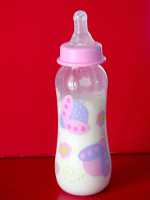MedicalResearch.com Interview with:
Dr. James A. Simon, MD CCD, NCMP, FACOG
Clinical professor of obstetrics and gynecology
George Washington University, and
Medical director, Women's Health & Research Consultants®
Washington, D.C
MedicalResearch.com: What is the background for this study?
Response: The Phase 2b uterine fibroids study was a 24-week, multicenter, double-blind, randomized, placebo-controlled, parallel group clinical trial that evaluated the efficacy and safety of elagolix alone or in combination with add-back therapy (estradiol/norethindrone acetate) in women with heavy uterine bleeding associated with uterine fibroids. Elagolix is currently being investigated in diseases that are mediated by sex hormones, such as uterine fibroids and endometriosis.
The study was conducted in 567 premenopausal women, age 18 to 51, at 100 sites in the United States, Canada, Puerto Rico, Chile and the United Kingdom. The two cohort design study evaluated the safety and efficacy of two elagolix treatment regimens (300mg BID and 600mg QD) alone and in combination with two different strengths of add-back therapy (estradiol/norethindrone acetate). The data presented were results from the 300mg cohort. Results from the 600mg cohort were similar and will be reported in a future publication.
Current non-surgical treatments indicated for uterine fibroids are limited, and women suffering from heavy menstrual bleeding associated with uterine fibroids need more options.
(more…)
 This post is for background information only. Please consult your health care provider for any questions regarding your menses and overall health.
When it comes to our menstrual cycles, many of us are well-acquainted with the usual signs: cramps, mood swings, and the classic flow of red. But what if you experience light bleeding before your expected period? This can be both confusing and concerning, leaving you wondering if everything is okay. In this article, we’ll uncover the truth behind light bleeding before expected period, explore the common causes, and what this phenomenon might reveal about your health.
This post is for background information only. Please consult your health care provider for any questions regarding your menses and overall health.
When it comes to our menstrual cycles, many of us are well-acquainted with the usual signs: cramps, mood swings, and the classic flow of red. But what if you experience light bleeding before your expected period? This can be both confusing and concerning, leaving you wondering if everything is okay. In this article, we’ll uncover the truth behind light bleeding before expected period, explore the common causes, and what this phenomenon might reveal about your health.
 This post is for background information only. Please consult your health care provider for any questions regarding your menses and overall health.
When it comes to our menstrual cycles, many of us are well-acquainted with the usual signs: cramps, mood swings, and the classic flow of red. But what if you experience light bleeding before your expected period? This can be both confusing and concerning, leaving you wondering if everything is okay. In this article, we’ll uncover the truth behind light bleeding before expected period, explore the common causes, and what this phenomenon might reveal about your health.
This post is for background information only. Please consult your health care provider for any questions regarding your menses and overall health.
When it comes to our menstrual cycles, many of us are well-acquainted with the usual signs: cramps, mood swings, and the classic flow of red. But what if you experience light bleeding before your expected period? This can be both confusing and concerning, leaving you wondering if everything is okay. In this article, we’ll uncover the truth behind light bleeding before expected period, explore the common causes, and what this phenomenon might reveal about your health.




